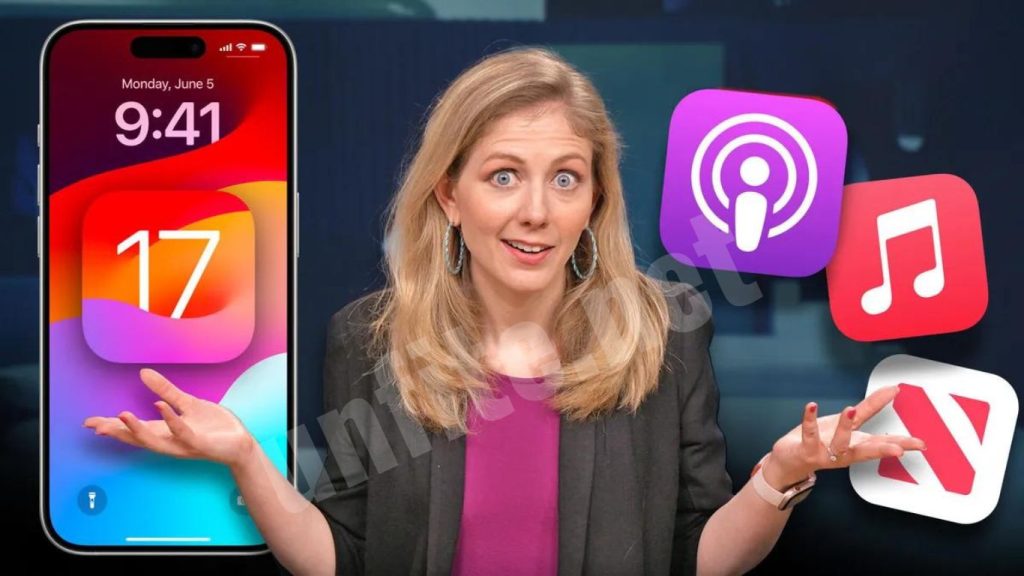iOS 17.1 Set for October 24 Release – Exciting New Features Unveiled

France temporarily suspended iPhone 12 sales due to excessive electromagnetic wave emissions. To address this, Apple will release iOS 17.1 on October 24, which will fix the issue and introduce new features. The release date was announced by France’s National Frequency Agency (ANFR), following Apple’s commitment to update the iPhone 12 in response to regulatory concerns.
Apple is set to release iOS 17.1 on October 24, bringing a host of exciting new features and improvements for iPhone users. This update is highly anticipated, not only for its fresh functionalities but also for addressing key performance issues, including concerns raised in some markets about electromagnetic emissions. With iOS 17.1, Apple aims to enhance the overall user experience by introducing new tools, improved security measures, and updates designed to optimize device performance. Here’s a look at what to expect from this latest iOS release.
What did the Agence Nationale Des Fréquences (ANFR) Say About The Update?
Apple has made the iOS 17.1 update available to select customers who volunteered as beta testers. According to the company, all French iPhone 12 users will receive this software update by October 24 at the latest.
An update on the ANFR website confirms that “Apple has developed a software update, and the ANFR has validated it as it effectively brings the localized SAR ‘member’ back into compliance with the regulatory limit of 4 W/kg.”
The French regulatory body further stated, “The sales ban on the iPhone 12 will remain in place in France until this update is fully deployed to the general public.”
What new features will be included in iOS 17.1?
Apple is rolling out several exciting features to improve user experience across various apps and functions.
- Music App Enhancements: Apple is making the Music app more personalized. With the addition of a star icon, users can highlight their favorite songs, albums, playlists, or artists. These selections are saved in the library and improve Apple’s music recommendations, allowing users to get more tailored suggestions based on their preferences.
- AirDrop Enhancements: AirDrop, Apple’s file-sharing feature, is getting a helpful update. The new “Out of Range” option will allow users to send or receive files even if the two devices are no longer close to each other. When devices move out of Bluetooth range, file transfers can continue over Wi-Fi or cellular data, ensuring a seamless experience regardless of distance.
- Connected Cards in Wallet: Apple is also expanding the capabilities of its Wallet app for iPhone users in the UK. With the new Connected Cards feature, users can add debit and credit cards from participating banks to the Wallet app. This allows them to conveniently check recent transactions and card balances, making financial management easier directly from their iPhones.
iOS 17.1 Release Date Confirmed: October 24
Apple’s official announcement of the iOS 17.1 release date for October 24 has drawn significant attention, primarily after concerns were raised in France about the iPhone 12’s electromagnetic wave emissions. France’s regulatory body, the Agence Nationale des Fréquences (ANFR), found that the iPhone 12 exceeded legal limits for electromagnetic radiation, leading to a temporary sales ban in the country. To address this, Apple developed iOS 17.1 to lower the Specific Absorption Rate (SAR) and bring it back within regulatory compliance.
This update is crucial for Apple as it demonstrates its swift response to regulatory concerns, ensures product safety, and maintains its global market presence. The release of iOS 17.1 not only resolves this technical issue but also brings additional features that will enhance the user experience. Among these new features are improvements to the Music app, AirDrop, and Apple Wallet.
New Features in iOS 17.1

Music App Enhancements: Personalized Recommendations
With iOS 17.1, Apple introduced a new feature in the Music app: a star icon that allows users to prioritize their favorite songs, albums, playlists, or artists. By selecting the star icon, users can easily mark content they love, which is then saved in their library. This feature gives users more control over their listening experience and helps personalize it further.
The star icon helps Apple’s algorithm better understand individual preferences. By highlighting certain songs or artists, users can improve the app’s music recommendations, leading to a more tailored selection of tracks based on what they enjoy the most.
AirDrop Enhancements: Seamless File Sharing
iOS 17.1 also brings significant improvements to AirDrop, including the introduction of the “Out of Range” option. Previously, AirDrop required both devices to be in close proximity for file transfers to work. Now, with this new feature, users can continue to send or receive files even when the devices move out of range. If the two devices lose Bluetooth or local connection, the transfer will switch to Wi-Fi or cellular data to complete the process.
This update makes file sharing more convenient, especially for larger files or when users need to move away from each other mid-transfer. It allows uninterrupted sharing over longer distances, improving AirDrop’s overall efficiency for everyday use.
Connected Cards in Wallet: Expanded Financial Management
For iPhone users in the UK, iOS 17.1 introduces a new Connected Cards feature within the Wallet app. This enhancement allows users to add debit and credit cards from select banks, giving them more financial control directly from their iPhones. Once added, users can view their recent transactions and card balances in real-time without needing to visit their banking app.
This feature streamlines financial management, offering a centralized place for users to access their card details. By making banking more accessible within the Wallet app, Apple provides users with enhanced convenience and ease of monitoring their financial activities.
Performance Improvements and Bug Fixes in iOS 17.1
Performance Optimizations and Bug Fixes in iOS 17.1
iOS 17.1 will introduce several performance optimizations and bug fixes designed to enhance the overall user experience. Apple’s updates are known for addressing system slowdowns, app crashes, and glitches that users may encounter over time. This update will improve system stability, making everyday tasks like browsing, messaging, and multitasking smoother and more efficient.
Apple has also focused on improving battery performance in iOS 17.1, ensuring better power management to extend battery life for iPhone users. These optimizations will help users enjoy longer usage times without compromising performance. Additionally, bugs affecting app compatibility, display responsiveness, and system settings are expected to be addressed in this release, resolving issues reported by users in previous versions.
Apple’s commitment to continuous device enhancement is a core part of its software update strategy. With every iOS update, including iOS 17.1, Apple refines device performance, ensuring users experience faster processing, smoother animations, and fewer disruptions in their daily use.
Security Updates and General Improvements
Beyond performance improvements, iOS 17.1 also includes crucial security updates that protect users from potential vulnerabilities. Apple regularly identifies and patches security flaws to safeguard user data, ensuring the device is secure from malware, hacking, and privacy breaches. This update will include fixes for known security threats, providing peace of mind for users.
General improvements, such as enhanced Face ID recognition, app loading speeds, and improved accessibility features, will also contribute to smoother iPhone experiences. These changes, though often subtle, collectively enhance the overall functionality and reliability of iOS devices, ensuring that users enjoy a seamless experience with every update.
Addressing Regulatory Concerns with iOS 17.1
iOS 17.1: A Response to Regulatory Concerns About Electromagnetic Emissions
The release of iOS 17.1 is a direct response to concerns raised by regulatory bodies, notably France’s National Frequency Agency (ANFR), regarding the iPhone 12’s electromagnetic emissions. In early 2024, the ANFR found that the iPhone 12 exceeded legal limits for electromagnetic radiation emissions, specifically the Specific Absorption Rate (SAR), which measures how much radiation the body absorbs from the device. As a result, France temporarily halted iPhone 12 sales and demanded that Apple take corrective action.
In response, Apple collaborated with the ANFR and developed the iOS 17.1 update to bring the iPhone 12 into compliance with regulatory standards. This software update includes modifications that reduce the SAR levels to meet the 4 W/kg limit imposed by the ANFR, ensuring that the iPhone 12 adheres to safety guidelines set by regulatory authorities. Apple’s swift response highlights the company’s commitment to addressing concerns and maintaining product safety across global markets.
Apple’s Cooperation and Commitment to Resolution
Apple demonstrated its willingness to cooperate with regulators by working closely with the ANFR to resolve the issue. The development of iOS 17.1 was a vital part of this collaboration, ensuring that all iPhone 12 users in France—and potentially other regions with similar concerns—would receive an update to bring their devices within legal SAR limits.
By deploying iOS 17.1, Apple addresses the technical issues raised and maintains compliance with international regulations. This update serves as an example of how Apple actively works to resolve regulatory challenges while ensuring users can continue enjoying their devices safely.
How to Update to iOS 17.1

How to Update Your iPhone to iOS 17.1: A Step-by-Step Guide
Updating your iPhone to iOS 17.1 is straightforward. Follow these steps to ensure a smooth update process:
Backup Your iPhone:
Why It’s Important: Before starting the update, it’s crucial to back up your data to prevent any potential loss of information during the update process.
How to Back Up:
iCloud Backup:
- Connect your iPhone to a Wi-Fi network.
- Go to Settings > [Your Name] > iCloud > iCloud Backup.
- Tap Back Up Now and wait for the backup to complete.
Backup via iTunes/Finder:
- Connect your iPhone to your computer using a USB cable.
- Open iTunes (on Windows or macOS Mojave or earlier) or Finder (on macOS Catalina or later).
- Select your iPhone when it appears on the screen.
- Click Back Up Now and wait for the process to finish.
Check for the Update:
- Ensure your iPhone is connected to a Wi-Fi network.
- Open Settings on your iPhone.
- Go to General > Software Update.
- Your iPhone will check for available updates. If iOS 17.1 is available, it will be displayed.
Download and Install the Update:
- Tap Download and Install to begin the update process.
- If prompted, enter your passcode.
- Agree to the Terms and Conditions.
- Your iPhone will start downloading the update. This may take some time, depending on your internet speed.
- Once downloaded, tap Install Now to start the installation. Your iPhone will restart during this process.
Verify the Update:
- After your iPhone restarts, go back to Settings > General > Software Update.
- Ensure that iOS 17.1 is listed as the current version.
- Enabling Automatic Updates for Future Releases
- To ensure you receive future iOS updates automatically, follow these steps:
Open Settings:
Go to Settings on your iPhone.
Navigate to Software Update:
- Tap General > Software Update.
Enable Automatic Updates:
- Tap Automatic Updates.
- Toggle on the Download iOS Updates switch. This will allow your iPhone to download updates automatically when they become available.
- Toggle on the Install iOS Updates switch. This enables automatic installation of updates overnight when your iPhone is connected to Wi-Fi and plugged in.
Frequently Asked Question
When is iOS 17.1 scheduled to be released?
iOS 17.1 will be released on October 24, 2024, and will be available for all compatible iPhones.
What are the key new features in iOS 17.1?
iOS 17.1 introduces several exciting features, including enhancements to the Music app, new AirDrop options like the “Out of Range” feature, and Connected Cards in the Wallet app for UK users.
How does the new star icon in the Music app work?
The star icon allows users to prioritize their favorite songs, albums, playlists, and artists. By marking content with the star, users can improve personalized recommendations based on their preferences.
What is the “Out of Range” option in AirDrop?
The “Out of Range” option allows users to continue file transfers even when devices are no longer in close proximity. If the devices move apart, transfers will switch to Wi-Fi or cellular data.
What improvements are included in the Wallet app’s Connected Cards feature?
The Connected Cards feature lets users add debit and credit cards from select banks to their Wallet app. Users can view recent transactions and card balances directly from their iPhones.
How do I update my iPhone to iOS 17.1?
To update, go to Settings > General > Software Update. Ensure your iPhone is connected to Wi-Fi and follow the prompts to download and install the update.
Why is it important to back up my iPhone before updating?
Backing up your iPhone ensures that you don’t lose any data in case something goes wrong during the update process. You can back up via iCloud or iTunes/Finder.
Will iOS 17.1 address any previous issues with the iPhone 12?
Yes, iOS 17.1 addresses regulatory concerns about the iPhone 12’s electromagnetic emissions. The update includes fixes to ensure compliance with safety standards.
How can I enable automatic updates for future iOS releases?
Go to Settings > General > Software Update > Automatic Updates. Toggle on Download iOS Updates and Install iOS Updates to receive and install updates automatically.
Are there any known issues with iOS 17.1 that users should be aware of?
As with any significant update, there might be minor issues or bugs initially. Apple generally provides patch updates to address any significant problems. For the latest information, check Apple’s support pages or community forums.
Conclusion
The upcoming release of iOS 17.1 on October 24, 2024, promises to be a game-changer for iPhone users, blending crucial fixes with exciting new features. This update not only addresses regulatory concerns about electromagnetic emissions but also enhances user experience with significant improvements in the Music app, AirDrop, and Wallet app.
With features like personalized recommendations through the new star icon, seamless file sharing with the “Out of Range” AirDrop option, and expanded financial management with Connected Cards, iOS 17.1 is set to offer a richer, more efficient user experience. Apple’s commitment to addressing technical issues while introducing innovative functionalities underscores its dedication to both safety and user satisfaction.




